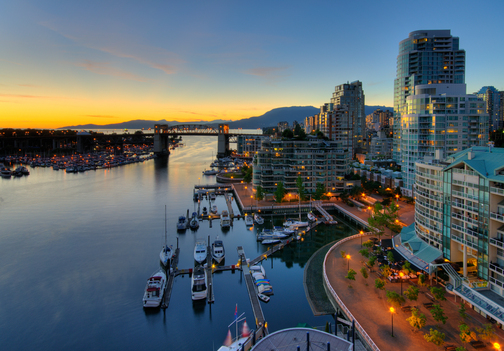
We’ve all seen some of the graphic images of flooding along the East Coast of the United States in recent years: neighbourhoods where streets have become canals, an oddly picturesque parking lot full of yellow taxis floating in blue water up to their windshields, and not-so-picturesque images of people assessing the wreckage of their homes and belongings.
Here on the West Coast we might not have to worry about hurricane season, but on the other hand we don’t really have any reason to be complacent. Climate scientists and our own provincial government are warning that we should prepare for at least 1 meter of sea level rise by 2100, along with more extreme weather events. Given that we have, particularly in the Lower Mainland, a significant concentration of urban development along our shorelines, this should be reason to give us all pause. Paying the Price, a 2011 report from the now-defunct and sadly missed National Roundtable on the Environment and the Economy suggested that the annual costs associated with flood damage to dwellings in coastal BC could approach $4 billion by 2050. Are we going to keep building in these vulnerable areas? And what are we going to do about the development that is already there?
RISE, a recent competition organized by Simon Fraser University, asked entrants to come up with a visionary solution to make the greater Vancouver area more resilient to sea level rise. West Coast Environmental Law teamed up with DG Blair from the BC Stewardship Centre and Cathy LeBlanc, a senior planner at the Ministry of Community, Sport and Cultural Development to propose that an “old” idea—relying on natural shorelines to create a buffer zone for seaside properties—was an effective means to protect our communities from the impacts of rising seas if it was applied in a new way on a larger scale.
Heading down to the SFU’s Segal Building on a Sunday afternoon in October, along with 29 other teams we pitched our idea to a panel of three judges. Somewhat to our surprise, we found ourselves in the final round of ten, with five minutes to make our case to another panel of judges, with all of the teams and members of the public looking on.
No one can really argue with the fact that the foreshore, the intertidal zone, supports a rich and diverse habitat. A picture of a beautiful heron standing in the shallow waters off Port Moody helped us make this point. Surrounding our coastal communities with hard edges like dikes and sea walls means the end of this intertidal zone as the sea rises. Instead of shifting landward, beaches are stopped by walls and will simply disappear under water. This is sometimes called “coastal squeeze” and it’s one of the damaging impacts of climate change on our urbanized coastlines.
But the game-changer for us in thinking about resilience to sea level rise was new research commissioned by Green Shores, an initiative of the BC Stewardship Centre. This research shows that natural and restored shorelines can effectively buffer upland properties against the 1 m of sea level rise projected for our region by 2100. What’s more, naturalized shorelines required only 30-70% of the upfront costs of more conventional approaches, such as sea walls. Other researchers have come to similar conclusions when looking at coastal areas in the United States.
Apparently the judges agreed with us, because we were awarded the prize for Best Environmental Idea. Congratulations to all the other winners, and all the competitors.
Now the hard part begins—how to implement this idea in practice. Unlike many coastal regions in the United States, in BC we don’t have coastal management legislation or a framework that could support a coordinated effort to protect our coastlines and increase resilience of urbanized areas.
Existing legal and policy protection has decreased in recent years, with the dissolution of federally coordinated oversight and protection bodies like the Fraser River Estuary Management Program (FREMP) and the Burrard Inlet Environmental Action Plan (BIEAP), and the recent gutting of federal legislation that protected the marine environment such as the Fisheries Act and the Navigation Protection Act.
Jurisdiction over the coastline is a legal patchwork of provincial Crown land policies, federal port and fisheries jurisdiction, direct control by First Nations as Indian reserve or treaty lands as well as unceded traditional territories, and limited regulation by local governments. At present there is no integrated or overarching strategy to manage and protect our shorelines in south Coast regions like the Lower Mainland.
While sea level rise is a big challenge, it is also an opportunity to find some common ground and remedy this lack of coordinated oversight and protection for our valuable coastlines. There are no easy answers, and multiple levels of government need to be involved: provincial, First Nations, federal and local. As well, a focal point needs to be established for research activities that can tap into the academic resources in the region.
Our current workplan for West Coast’s Liveable Sustainable Communities program involves exploring how existing law and policy can be flexed to support coastal and community protection (and where reforms are needed) as communities begin to address sea level rise, and promoting regional and sub-regional collaboration among policymakers.
Top photo: Picture BC